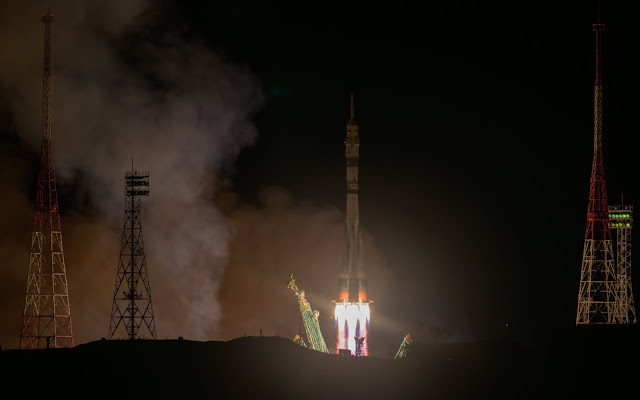A Tribute to NASA Apollo Astronaut & Moonwalker Charlie Duke
Astronaut Charles M. Duke Jr., Apollo 16 lunar module pilot, salutes the United States flag during the mission's first extravehicular activity (EVA), on April 21, 1972. Stone Mountain reaches five-sixths across the photo in background. The Lunar Module (LM) and Lunar Roving Vehicle (LRV) are in the background. While John W. Young, commander and Duke descended in the LM to explore the Descartes region of the moon, Thomas K. Mattingly II, command module pilot, remained with the Command and Service Modules (CSM) in lunar orbit.
Astronaut Charles M. Duke Jr., lunar module pilot, is photographed collecting lunar samples at Station No. 1, during the first Apollo 16 extravehicular activity (EVA), at the Descartes landing site. This picture, looking eastward, was taken by astronaut John W. Young, commander. Duke is standing at the rim of Plum Crater. The parked Lunar Roving Vehicle (LRV) can be seen in the left background.
Astronaut Charles M. Duke Jr. works at the front of the Lunar Roving Vehicle (LRV) parked in this rock field at a North Ray Crater geological site during the mission's third extravehicular activity (EVA) on April 23, 1972. Astronaut John W. Young took this picture with a 70mm Hasselblad camera.
Astronaut Thomas K. Mattingly II, command module pilot, performs an extravehicular activity (EVA) during the Apollo 16 trans-Earth coast. Mattingly is assisted by astronaut Charles M. Duke Jr., lunar module pilot. Mattingly inspected the SIM Bay or Service Module (SM), and retrieved film from the Mapping and Panoramic Cameras. Mattingly is wearing the helmet of astronaut John W. Young, commander. The helmet's lunar EVA visor assembly helped protect Mattingly's eyes from the bright sun. This view is a frame from motion picture film exposed by a 16mm Maurer camera.
Astronaut Charles M. Duke, Jr. - Official NASA Portrait

These three astronauts were selected by the National Aeronautics and Space Administration (NASA) as the prime crew men of the Apollo 16 lunar landing mission. They were, left to right, Thomas K. Mattingly II, command module pilot; John W. Young, commander; and Charles M. Duke Jr., lunar module pilot. While astronauts Young and Duke descended in the Lunar Module (LM) to explore the moon, astronaut Mattingly remained with the Command and Service Modules (CSM) in lunar orbit.

The Apollo 16 crew patch is dominated by an eagle perched atop a red, white and blue shield a superimposed on a lunar scene, surrounded by a blue circle of 16 stars with the crew's surnames completing the bottom are of the circle. Across the face of the shield is a gold symbol of flight outlined in blue, similar to that on the National Aeronautics and Space Administration (NASA) agency seal and insignia. The design was created by a NASA artist from ideas submitted by the three crew men: astronauts John W. Young, commander; Thomas K. Mattingly II, command module pilot; and Charles M. Duke Jr., lunar module pilot.

For the sixth crewed lunar landing mission, the Apollo 16 Saturn V rocket, carrying three astronauts: Mission commander John W. Young, Command Module pilot Thomas K. Mattingly II, and Lunar Module pilot Charles M. Duke, lifted off on April 16, 1972. The Apollo 16 continued the broad-scale geological, geochemical, and geophysical mapping of the Moon's crust, begun by the Apollo 15, from lunar orbit. This mission marked the first use of the Moon as an astronomical observatory by using the ultraviolet camera/spectrograph. It photographed ultraviolet light emitted by Earth and other celestial objects. The Lunar Roving Vehicle was also used. The mission ended on April 27, 1972.
Charles M. Duke, Jr., was selected to join NASA’s fifth astronaut group in April 1966. He served as the spacecraft communicator (CAPCOM) for the Apollo 11 Moon landing and as the lunar module pilot for Apollo 16 in April 1972. He was the tenth and youngest person to walk on the surface of the Moon.
NASA Apollo Astronaut Charlie Duke Biography:
https://www.nasa.gov/former-astronaut-charles-m-duke-jr/
Apollo 16 Moon Landing Mission: April 16-27, 1972
Apollo 16 Crew: NASA astronauts John W. Young, Charles M. Duke Jr., Thomas K. Mattingly II
Apollo 16 was the tenth crewed mission in the United States Apollo space program. It was the second of Apollo's "J missions" with an extended stay on the lunar surface, a focus on science, and the use of the Lunar Roving Vehicle (LRV). The landing and exploration were in the Descartes Highlands, a site chosen because scientists expected it to be an area formed by volcanic action, although this proved not to be the case. The Descartes Highlands is an area of lunar highlands located on the near side. It is located in the area surrounding Descartes crater, after which the feature received its name. Descartes is a heavily worn lunar impact crater that is located in the rugged south-central highlands of the Moon. It is named after the French philosopher, mathematician and physicist René Descartes.
Three primary objectives of the Apollo 16 mission were (1) to inspect, survey, and sample materials and surface features at a selected landing site in the Descartes region; (2) emplace and activate surface experiments; and (3) conduct in-flight experiments and photographic tasks from lunar orbit. Additional objectives included performance of experiments requiring zero gravity and engineering evaluation of spacecraft and equipment.
Learn more about Apollo 16 Moon Mission:
https://www.nasa.gov/mission/apollo-16/
Image Credits: NASA/JSC/KSC
Image Dates: Jan. 1, 1971-April 25, 1972
#NASA #Space #Astronomy #Science #ApolloProgram #Apollo16 #Moon #Astronauts #JohnYoung #CharlesDuke #ThomasMattingly #EVA #Geology #LunarHighlands #DescartesHighlands #DescartesCrater #UnitedStates #History #STEM #Education
ESO-1080p.jpg)






















NASA-JSC.jpg)















